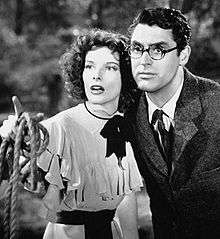Unit still photographer

A unit still photographer or simply, still photographer is a person who creates film stills, still photographic images specifically intended for use in the marketing and publicity of feature films in the motion picture industry and network television productions.[1][2][3] Besides creating photographs for the promotion of a film, the still photographer contributes daily to the filming process by creating set stills. With these, the photographer is careful to record all details of cast wardrobe, set appearance and background. The director and assistants review these images frequently for continuity and matching of all stage aspects.[4]
Cornel Lucas, a pioneer of film portraiture in the 1940s and 1950s, was the first still photographer to be an awarded a BAFTA in 1998, for work with the British Film Industry.[5][6]
Uses in the industry
Using individual frames from recorded video material is not practical due to the quality. Much higher resolution images are therefore used. Typically the end uses of these still photos would include the films theatrical release poster, DVD box artwork, the official web site photos, billboards, bus stop adverts, point of purchase displays, key art image sets released to the press and media as well as other printed and online collateral materials.
Unit still photographers are also responsible for creating "photo props" and "set dressing images", the photos and images used on-camera to create various illusions such as forensic photos, crime drama booking photos, character drivers' licenses, passport & I.D. photos, on-screen family photos, surveillance photos, computer screen displays, and any other image a producer may require in the course of a production.
In North America in particular, and some international locations as well, a unit still photographer must be a member of IATSE Local 600 International Cinematographers Guild, in order to perform services on union productions and union studio lots and locations. The most prestigious of these unit still photographers are also members of The Society of Motion Picture Still Photographers, an organization which promotes the work of those within the industry.
While often perceived as a "glamour" job for photographers, the reality is often very long hours (70+ hour weeks are the norm) on remote distant locations under difficult and often extreme conditions. The unit still photographer often coordinates with the unit publicist, but physically works in very close proximity not only to the film's camera crew, director, producers and actors, but also by extension in close proximity to the film's boom microphone operator. As such, unit still photographers go to great lengths to reduce, muffle, and otherwise mute the sound of their camera's motor drive & shutter so as not to distract the actors and to remain inaudible on the film's recorded dialogue soundtrack while the action is rolling.
Typically this is accomplished using a sound blimp, which is a sound-absorbing, foam-filled metal case in which the still camera body is fitted with a proprietary remote operation cable. This allows the camera to be activated and operated from a two-button (activation, focus & shutter release) exterior control. Limitations exist once the blimp is closed around the camera as you can no longer access the cameras controls (F-number, shutter speed, ASA/ISO settings) or menu displays, directly. The LCD display will also be out of view to review your images, in the closed position. This requires the photographer to make his control selections in advance, and then stick with those settings until the take-in-progress has been "cut", making adjustments between takes or set-ups. unit still photographers in this field typically produce over 2000+ marketable images per week for their major studio clients. The use of still photography is the use of alignment, positioning, as well as other techniques used to capture the "money shot." Still life photography is the depiction of inanimate subject matter, most typically a small grouping of objects that are either human-made or natural.
Since 2010, high-end DSLR cameras, which can be remotely controlled with Apps on smartphones and tablets, like the iPad, using the built-in 2-way WiFi radio-controlled interface between the tablet and the DSLR camera, and offer internal active noise reduction technologies, have increased the ability of the Unit Still Photographer to work more quietly, on the set.
References
- ↑ Brian Dzyak (2010). What I Really Want to Do on Set in Hollywood: A Guide to Real Jobs in the Film Industry. Crown Publishing Group. pp. 303–. ISBN 978-0-307-87516-7.
- ↑ Larry Goldman (1983). The professional photographer: developing a successful career. Doubleday. p. 117.
- ↑ Finola Kerrigan (2009). Film Marketing. Routledge. pp. 243–. ISBN 978-1-136-44000-7.
- ↑ "Still Photography in the Motion Picture Industry" by Ned Scott>: http://www.thenedscottarchive.com/hollywood/authorship.html
- ↑ Martin Childs (11 December 2012). "Cornel Lucas: Photographer who made his name as a pioneer of film portraiture - Obituaries". The Independent. Retrieved 2013-10-05.
- ↑ Andrew Dawson; Sean Holmes (2 August 2012). Working in the Global Film and Television Industries: Creativity, Systems, Space, Patronage. Bloomsbury Publishing. pp. 136–. ISBN 978-1-78093-021-3.
Further reading
- Stage and Theater Photography, Jeff Lowenthal, 1965. ASIN B000NU0SJU
- The Alvin Ailey American Dance Theater, photography by Susan Cook; commentary by Joseph H. Mazo, New York, Morrow (1978). ISBN 9780688033040, ISBN 9780688083045
- Creative Techniques in Stage & Theatrical Photography, by Paddy Cutts, Rosemary Curr, Quite Specific Media Group (September 1983), ISBN 978-0-7134-0667-2.
- Photography and the Performing Arts, Gerry Kopelow, Focal Press (June 9, 1994), ISBN 978-0-240-80168-1.
- The Complete Guide to Night and Low-Light Photography, Lee Frost, Amphoto Books (March 15, 2000), ISBN 978-0-8174-5041-0.
- Movie Photos: The guide to marketing and publicity photography, Alex Bailey, Imagebarn (19 Jun 2008), ISBN 978-0-9559337-0-7
External links
| Wikimedia Commons has media related to Film stills. |
- IATSE Local 600 International Cinematographers Guild
- The Society of Motion Picture Still Photographers
- Barton B. MacLeod, Still Photographer "The Green Berets" movie starring John Wayne (http://www.BartonMacLeod.com)
- Still Photographer Studio Contract at The Ned Scott Archive